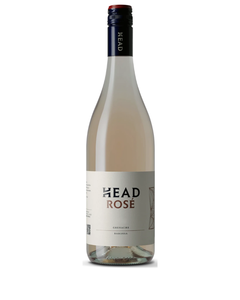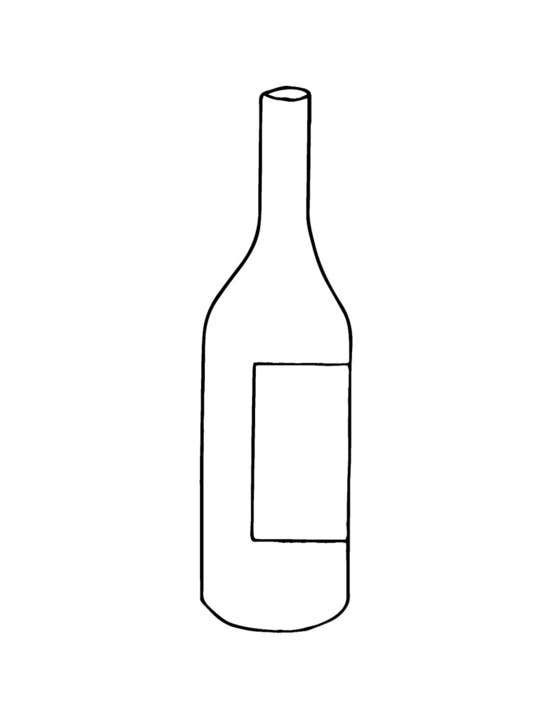ROSE WINE
Barossa
Australia’s oldest, most famous and internationally renowned wine growing region located a short distance from Adelaide, South Australia, the Barossa Valley contains the sub district of the Eden Valley, and is home to some of Australia’s, and the world’s oldest Shiraz vines. The Barossa Valley’s viticultural history extends back to the early 1800’s when English and Prussian immigrants founded vineyards, enterprises and wineries still family owned to this day. The British gentry was led by George Fife Angas (Angaston), Joseph Gilbert (Pewsey Vale), Samuel Smith (Founder of Yalumba in 1847) and William Salter (Saltram 1859). On the other hand a significantly more numerous population of Lutheran’s migrated fleeing the reformation in Prussia, pioneering viticulture and agriculture, numbering among them were names synonymous with the most established wineries in Australia including Johann Gramp (1847), Joseph Seppelt (Seppelt, 1851) and William Jacob (1854). Many of these original families continue in the wine business and own vineyards. The growers of the Barossa have weathered two world wars, drought, flood, bushfire, erratic swings in market preferences from red wine to white (1970’s), the Vine Pull Scheme of the 1980s whereby 130 year old, priceless, low yielding vines were removed due to lack of demand, to emerge stronger than ever, the one constant it’s ancient weathered vineyards and stoic population.
Principally a red wine growing region, historically the varieties planted were Shiraz, Grenache, Mataro (Mourvedre) alongside Pedro Ximenez and Frontignac for the production of fortified wine. The climate is warm and dry, with cool nights and warm to hot days. The Barossa Valley contains a complex typography of valleys, hills slopes and soils. The soils vary widely though the dominate composition is a clay loam and in areas low fertility sandy soils. Although red grapes are more pervasively planted, there are small quantities of white varieties including Semillon, which is often unwooded, with bright lemon zest notes and moderate acidity. Barossa Chardonnay tends to be richer and more generous with Melon and ripe peach notes and is quick to develop and best consumed young. Riesling which are also of a more broad and generous style, though many Barossa based wineries produce more zesty examples from Clare Valley and Eden Valley fruit. Small quantities of Viognier are cultivated, used primarily for blending with Shiraz, though some outstanding mono varietal bottling’s are available, Yalumba Virgilius in particular.
Of the Red varieties Shiraz is king with considerably more planted than Grenache or Mourvedre. Significantly, many of these vines are older than Shiraz or Syrah vines planted in Europe, the Barossa being fortunate enough not to encounter the devastations of phylloxera. Typically Barossa Shiraz is full bodied, lush with notes of blackberry, plum, medium acidity and high, but soft ripe tannins. They are traditionally aged in new oak imparting flavours of graphite and cigar box (new French oak) and coconut and vanilla (new American oak), the wines are renowned for their depth and longevity. The shift in the mid-1990s towards producing blockbuster wines that were high in alcohol fuelled by high Parker scores that then pushed the prices of the wines in America and Asia to new levels encouraged some winemakers to follow suit. The pendulum has now begun to swing in the other direction, led by a new generation of producers committed to making elegant, full to medium bodied Barossa red articulating individual vineyard character.
Many of Australia’s most famous wines are made in the Barossa and some of the most recognised producers include Penfolds, Peter Lehman, Yalumba, Wolf Blass and Henschke. The quintet of Penfolds Grange (mainly old vine Barossa shiraz aged in new American oak), Penfolds RWT Shiraz , Penfolds Magill Estate Shiraz (100% single vineyard), Penfolds Bin 707 Cabernet Sauvignon and Penfolds St Henri Shiraz) are all highly sought after wines. And Henschke’s iconic single vineyard ancient vine Hill of Grace is considered by many to be the equal of Penfolds Grange in terms of both quality and as wine investment. A recent resurgence has seen many smaller artisanal wineries producing outstanding wines on small scale, including Spinifex, Teusner, Ruggabellus, Standish, Kalleske and Head Wines to name a few.
Less pervasively planted are Grenache, Mourvedre and Cabernet Sauvignon. Cabernet Sauvignon prefers a slightly cooler climate and tends to be better in cooler years and the use of French Oak is more common than American. Grenache and Mourvedre are often blended with Shiraz in a traditional Rhone Blend, though also bottles as mono varietal wines. Grenache from the Barossa tends toward sweet fruits, raspberry, with hints of spice and soft tannins. Outstanding producers include Spinifex, Kalleske, Charles Melton and Rusden.
Sources:
The Oxford Companion to Wine, (ed) Jancis Robinson
James Halliday's Wine Atlas of Australia, James Halliday
Australia & New Zealand Complete Book of Wine, Compiled by Len Evans
-
 Head Wines Grenache Rose 2023
Head Wines Grenache Rose 2023More product information will be added here soon! In the meantime, if you do have any questions at all about this product or others in our store, you can contact us by phone or email. Our friendly and experienced team are always happy to assist - we love drinking, selling, talking about and being in and around wine!
2022Grenache, RoseAustralia349$28.00 As low as $25.20 -
 Quin Wines Barossa Valley Rose 2022Mataro sourced from Aldo's vineyard in the southern Barossa parish of Williamstown. Pale salmon in the glass with notes of redcurrant, raspberry, red cherry and citrus fruits along with hints of white flowers, marzipan, stone, raspberry cream and a whiff of freshly cut fennel. Super-sapid porcelain acidity drives this along nicely, and there's a wee slink of texture to boot, finishing dry, red-fruited and clanging for some food. DAVE BROOKES, James Halliday
Quin Wines Barossa Valley Rose 2022Mataro sourced from Aldo's vineyard in the southern Barossa parish of Williamstown. Pale salmon in the glass with notes of redcurrant, raspberry, red cherry and citrus fruits along with hints of white flowers, marzipan, stone, raspberry cream and a whiff of freshly cut fennel. Super-sapid porcelain acidity drives this along nicely, and there's a wee slink of texture to boot, finishing dry, red-fruited and clanging for some food. DAVE BROOKES, James Halliday
Andrew Quin and his wife Sky are a dynamic couple behind Quin Wines. Both born and raised in Melbourne they purchased a 7 hectare vineyard in Seppeltfield in the heart of the Barossa Valley with the goal of making exceptional wines. As head winemaker for both Hentley Farm and Ricca Terra, Andrew knows how to make wine, and works closely with the viticulturalists to ensure he always has the best fruit to work with.2022MourvedreAustralia349$28.00 As low as $25.20 -
 Bulman Wines Rose 2023
Bulman Wines Rose 2023Fresh strawberry and Bosc pear, a little musk and perfume. Fresh and lively, clean acidity, a pear skin grip, pomegranate/watermelon and peach iced tea, nice bit of chew to it, yet so finely balanced. Finish is refreshing too. Combines complexity with ease of drinking to wonderful effect. GARY WALSH, The Wine Front
It’s a more mouth-filling and juicy number than last year. I love those soft, caressing, slightly phenolic aspects. Alright, and I hope this is ok, I am going to steal Gary Walsh’s comment from above, because it’s perfect for this wine “peach iced tea” is just right, it has that peach juice and tea like, faint grip. Refreshing, oozing class, brimming with lively acidity and an overall upbeat feel to it. Finishes clean and bright as it started. This is world class Rose and I recommend it whole heartedly. ROSCOE
2023RoseAustralia349$30.00 As low as $27.00 -
 Rogers & Rufus Grenache Rose 2022
Rogers & Rufus Grenache Rose 2022More product information will be added here soon! In the meantime, if you do have any questions at all about this product or others in our store, you can contact us by phone or email. Our friendly and experienced team are always happy to assist - we love drinking, selling, talking about and being in and around wine!
2018RoseAustralia349$24.00 As low as $21.60 -
 Turkey Flat Rose 2023
Turkey Flat Rose 2023James Adams is the new winemaker at Turkey Flat, this being the first vintage under his regime.
Red fruit and tangerine, a little perfume and spice – maybe a subtle sort of a curry leaf or lemongrass thing happening. Soft but with nice grip and crunch to texture, a fine chalkiness, subdued but kind of juicy red fruit with a fresh finish of good length, a dash of savoury complexity as it goes. Lovely. GARY WALSH, The Wine Front
2023RoseAustralia349$26.00 As low as $23.40 -
 The Lost Plot Mourvedre Rose 2021
The Lost Plot Mourvedre Rose 2021100% Mourvèdre Terroir From the granite soil that sits over layers of ancient river gravel in the Box Grove Vineyards in Nagambie, Victoria, on Taungurung land. Grapes grown by Sarah Gough of the Box Grove Vineyard. She uses her own compost and focuses on a well aerated canopy to reduce the need for sulphur and copper. Hand picked and whole bunch pressed before being Transferred to seasoned French oak barrels. Long ferment with indigenous yeasts. Long contact with lees and solids, no stirring. Racked just before bottling.
2021RoussaneAustralia349$30.00 As low as $27.00

